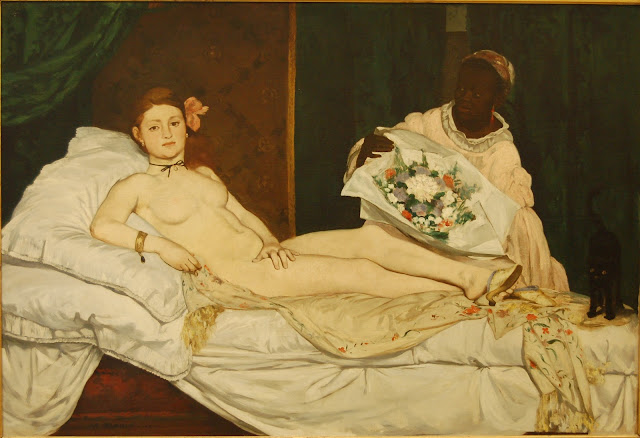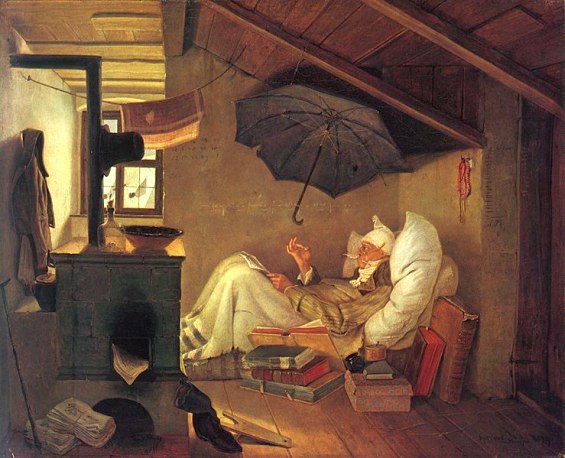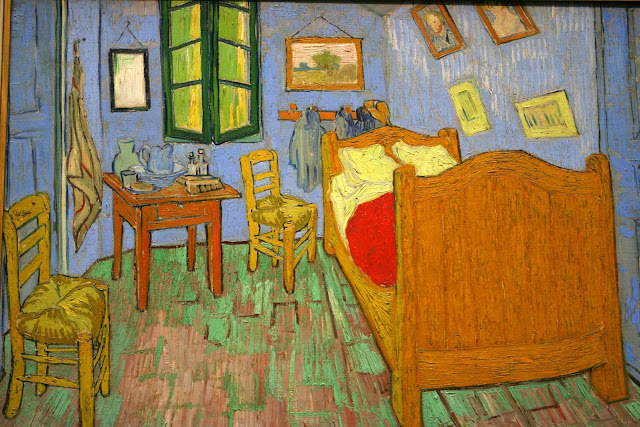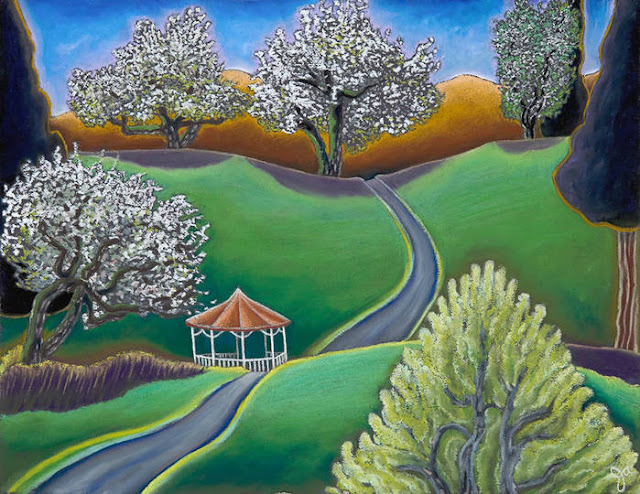Today has been the first day since Christmas day that I’ve felt well enough to get out of bed. I’m still not well but at least I’m managing to stay awake for more than 30 minutes at a time. I thought I would make the effort to get dressed and spend a couple hours in the living room watching TV.
‘Bednobs and Broomsticks’ happened to be on TV. It’s a while since I’ve since I’ve seen this film, it reminds me of when my kids were young and we used to spend Sunday afternoons watching films. We watched silly films like Chitty Chitty Bang Bang, Mary Poppins and this one and even now my grandchildren still like watching these silly old films. I couldn’t help thinking it was quite apt, this was the first time I had been out of bed and I found myself watching a film about a bunch of people transported around on an old iron framed bed. And then I thought maybe it was some sort of omen, beds feature in quite a few paintings, and here are a few of them.
No 1 ( above) has to be the very famous VINCENT VAN GOGH: “La chambre de Van Gogh à Arles (Van Gogh's room at Arles)”, Van Gogh first painted his room in Arles in October 1888 (Amsterdam, Rijksmuseum Van Gogh), and, one year later, he painted two more versions while living in Saint-Rémy, this one is one of the later ones and the most elaborate of the three.
 No 2 HENRI DE TOULOUSE-LAUTREC: “Dans le lit (In bed)", 1893 This is one (and arguably the best) of the several scenes of a couple in bed painted by Toulouse-Lautrec,
No 2 HENRI DE TOULOUSE-LAUTREC: “Dans le lit (In bed)", 1893 This is one (and arguably the best) of the several scenes of a couple in bed painted by Toulouse-Lautrec, No 3 EDOUARD MANET: "Olympia", this was first exhibited in 1865 and the painting was not liked by art critics of the time. However, it was much admired by Émile Zola.
No 3 EDOUARD MANET: "Olympia", this was first exhibited in 1865 and the painting was not liked by art critics of the time. However, it was much admired by Émile Zola.
No 4 Mary Cassatt's painting Breakfast In Bed, one of the loveliest portrayals of mother and child.
 No 5 The Nightmare: Henry Fuseli, 1781, this is the one that most resembles my confinement to bed……….the stuff that nightmar4s are made of.
No 5 The Nightmare: Henry Fuseli, 1781, this is the one that most resembles my confinement to bed……….the stuff that nightmar4s are made of. No 6 Master Bedroon by Andrew Wyeth, no one can resist this painting.
No 6 Master Bedroon by Andrew Wyeth, no one can resist this painting.  No 7 The Poor Poet by Carl Spitzweg. This is one of my favourites, I love the detail. A poll of Germans listed this painting as their second favorite painting of all time second only to Leonardo da Vinci’s Mona Lisa. It has often been used in literary works to exemplify the metaphor of the starving artist. Unfortunately, this painting has been stolen on two different occasions. The thieves in 1989 were more successful as the original work remains among the missing
No 7 The Poor Poet by Carl Spitzweg. This is one of my favourites, I love the detail. A poll of Germans listed this painting as their second favorite painting of all time second only to Leonardo da Vinci’s Mona Lisa. It has often been used in literary works to exemplify the metaphor of the starving artist. Unfortunately, this painting has been stolen on two different occasions. The thieves in 1989 were more successful as the original work remains among the missing






















































